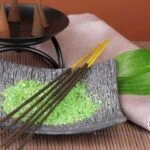Aromatherapy involves the use of natural plant extracts to promote health and well-being. The National Association for Holistic Aromatherapy (NAHA) plays a significant role in setting standards and guidelines for the practice of aromatherapy. Understanding the qualifications for health professionals in this field is crucial, as it ensures that individuals receive safe and effective care.
However, there may be confusion surrounding whether a yoga instructor can be considered a health professional in aromatherapy. In this article, we will explore this topic in detail.
A health professional in aromatherapy typically possesses specific qualifications and certifications to ensure they are equipped to provide safe and ethical care. This includes training in the proper use of essential oils, knowledge of contraindications, and an understanding of how aromatherapy can be integrated into holistic health practices. NAHA serves as a valuable resource for setting these standards and defining what it means to be a health professional in aromatherapy.
Yoga instructors are known for promoting health and wellness through the practice of yoga. This raises the question of how their role relates to aromatherapy. Can yoga instructors ethically incorporate aromatherapy into their teachings? Additionally, what certifications or training do yoga instructors typically receive, and do they include education on aromatherapy? Understanding these aspects is essential when considering whether yoga instructors can be considered health professionals in the realm of aromatherapy according to NAHA standards.
Defining a Health Professional in Aromatherapy
The National Association for Holistic Aromatherapy (NAHA) plays a crucial role in setting industry standards and guidelines for aromatherapy practitioners. So, what exactly does NAHA consider as a health professional in the field of aromatherapy?
According to NAHA, a health professional in aromatherapy is an individual who has completed a specific level of education and training in aromatherapy, possesses relevant certifications, and abides by a code of ethics. This definition encompasses various professionals, including clinical aromatherapists, aroma-chologists, and certified aromatherapy teachers.
In order to be recognized as a health professional in aromatherapy by NAHA, individuals are typically required to have completed a comprehensive aromatherapy education program from an approved school or institution. Additionally, they must have achieved a certain number of practical training hours and passed any necessary examinations or assessments. Furthermore, maintaining certification often entails pursuing continuing education to stay updated on the latest developments in the field.
Given these requirements, it becomes evident that becoming a health professional in aromatherapy is both rigorous and specialized. While some yoga instructors may incorporate essential oils or aromatic practices into their classes, they may not necessarily meet the criteria set forth by NAHA for recognized health professionals in the field of aromatherapy.
However, there are opportunities for yoga instructors to bridge this gap through additional training and seeking out certifications if they wish to be officially recognized by NAHA as health professionals in aromatherapy.
The incorporation of essential oils and other aromatic elements into yoga practice can offer numerous benefits when done appropriately; however, it’s important for yoga instructors who want to implement these practices professionally to consider pursuing further education and potentially seeking recognition from organizations such as NAHA. This will not only ensure that they are providing the highest quality of care to their clients but also align with industry standards for health professionals in the field of aromatherapy.
| NAHA Definition | Health Professional Qualifications |
|---|---|
| Individuals who have completed specific education and training in aromtherapy | Comprehensive education program completion from an approved school or institution along with required practical hours |
| Possesses relevant certifications | Pursuit of continuous education to stay updated on latest developments |
| Abides by a code of ethics | N/A – |
The Role of a Yoga Instructor
A yoga instructor plays a crucial role in promoting holistic health and wellness through the practice of yoga. Yoga is not only about physical postures and movements, but also about creating a sense of balance, mindfulness, and emotional well-being.
The integration of aromatherapy can further enhance the overall experience for individuals participating in yoga classes. Aromatherapy, as defined by the National Association for Holistic Aromatherapy (NAHA), involves the use of essential oils to promote physical, emotional, and spiritual well-being.
Incorporating aromatherapy into yoga sessions can create a multi-sensory experience that cultivates relaxation and enhances the mind-body connection. As an experienced yoga instructor, you have the opportunity to introduce aromatherapy to your students in a professional and ethical manner. By integrating essential oils into your classes, you can support your students’ overall well-being and deepen their yoga practice.
To effectively incorporate aromatherapy into your teaching, it’s important to have a solid understanding of both yoga principles and essential oil safety. You should also be aware of any potential contraindications or sensitivities that your students may have when exposed to certain scents or oils. Furthermore, it may be beneficial for you to obtain specific training or certification in aromatherapy to ensure that you are practicing safely and ethically.
- Learn about different essential oils and their properties
- Understand how certain scents can enhance relaxation or energize participants
- Obtain necessary education on safe usage and potential contraindications for clients
Additionally, incorporating aromatherapy into your yoga instruction may require collaboration with certified health professionals in aromatherapy. Working alongside these experts can provide valuable insights and guidance on how to best integrate essential oils into your classes while adhering to professional standards.
By combining the practices of yoga and aromatherapy in an informed and responsible way, you have the potential to create transformative experiences for your students that nurture both their physical bodies and their inner selves.
Requirements and Certifications for Yoga Instructors
Certifications and Training
Yoga instructors typically undergo specialized training to obtain certification in their field. This training often includes intensive study of yoga philosophy, anatomy, teaching methodology, and practical experience leading classes. Many reputable yoga teacher training programs require a minimum of 200 hours of instruction, with some offering advanced 500-hour programs as well. Additionally, instructors may choose to pursue specific certifications in specialties such as prenatal yoga, restorative yoga, or trauma-informed yoga.
Education on Aromatherapy
While the primary focus of yoga teacher training is on the practice and teaching of yoga itself, some programs may include education on complementary practices such as aromatherapy. However, the extent and depth of this education can vary widely between different training programs. In general, most standard yoga instructor certifications do not require extensive knowledge or certification in aromatherapy specifically.
Comparing Qualifications
When comparing the qualifications for yoga instructors to those for health professionals in aromatherapy, it is important to note that they are separate fields with distinct requirements. While both professions emphasize holistic wellness and the mind-body connection, the certifications and educational paths for each are tailored to their specific areas of focus. Health professionals in aromatherapy typically undergo specialized study and obtain certification from recognized organizations such as NAHA in order to practice aromatherapy professionally.
As a result, it can be said that although a yoga instructor plays a crucial role in promoting overall health and wellness through their teachings, they may not automatically hold the qualifications necessary to be considered a health professional in the field of aromatherapy according to NAHA standards. However, this does not diminish the potential for collaboration or ethical incorporation of aromatherapy into yoga sessions when done responsibly and knowledgeably.
Aromatherapy in the Context of Yoga and Health
Aromatherapy is the use of essential oils and other aromatic compounds to enhance physical and psychological well-being. While it is often associated with massage therapy and spa treatments, aromatherapy can also be a valuable tool for promoting health and wellness in other contexts, including yoga practice. When used in conjunction with yoga, aromatherapy has the potential to amplify the benefits of this ancient mind-body practice.
Enhancing the Yoga Experience With Aromatherapy
In the context of yoga and health, aromatherapy can be used to create an atmosphere that promotes relaxation, focus, and mental clarity. Essential oils such as lavender, chamomile, and bergamot are known for their calming properties, making them ideal for use during restorative or gentle yoga practices. Conversely, invigorating oils like peppermint and eucalyptus can help energize students during more vigorous styles of yoga such as vinyasa or power yoga.
Ethical Considerations in Using Aromatherapy in Yoga Instruction
Yoga instructors who wish to incorporate aromatherapy into their teachings should approach this practice with care and consideration for their students’ well-being. It is important to remember that not all individuals may respond positively to certain scents or essential oils due to allergies or sensitivities.
Additionally, it is crucial for yoga instructors to receive proper education on the safe usage of essential oils before integrating aromatherapy into their classes. This includes understanding appropriate dilution ratios, application methods, and potential contraindications.
When used responsibly, aromatherapy can complement the practice of yoga by creating a multi-sensory experience that engages both the mind and body. However, it is essential for yoga instructors to recognize that certain essential oils may have different effects on individuals based on their unique physiological responses.
Educating oneself about the potential risks associated with specific essential oils is imperative in order to ensure the safety and well-being of participants. As with any complementary therapy, maintaining open communication with students about their experiences with aromatherapy is key.
Perspectives From NAHA and Yoga Organizations
The practice of yoga has gained popularity as a holistic approach to improving physical, mental, and emotional well-being. In recent years, there has been growing interest in the integration of aromatherapy into yoga sessions to enhance the overall experience for practitioners. However, the question arises: does a yoga instructor count as a health professional in the context of aromatherapy according to the standards set by the National Association for Holistic Aromatherapy (NAHA)?
NAHA is a leading organization dedicated to promoting the safe and effective use of aromatherapy. They play a crucial role in establishing guidelines and standards for aromatherapy education and practice. According to NAHA, a health professional in aromatherapy is someone who has received formal training in aromatherapy from an accredited institution, holds relevant certifications, and adheres to ethical and safety standards in their practice.
When considering whether a yoga instructor can be classified as a health professional in aromatherapy, it is important to examine their qualifications and training related to aromatherapy. While some yoga instructors may have pursued additional education or certification in aromatherapy, this may not be a standard requirement within the yoga industry. Yoga instructors typically focus on teaching yoga postures, breathing techniques, meditation, and principles of yoga philosophy.
However, there are instances where yoga instructors have pursued specialized training in aromatherapy and have incorporated it into their teaching practice. In such cases, they may align with NAHA’s standards for health professionals in aromatherapy if they meet the necessary qualifications and adhere to ethical guidelines. It is essential for yoga instructors interested in incorporating aromatherapy into their practice to seek appropriate education and guidance from recognized institutions specializing in both disciplines.
| NAHA Standards | Yoga Instructor Qualifications |
|---|---|
| Formal training from an accredited institution | Focus on teaching yoga posturtes, breathing techniques, meditation |
| Hold relevant certifications | Pursued specialized training in aromatherpay |
| Adherence to ethical and safety standards | Incorporated ethical use of aromaotherapy into teaching practices |
Case Studies and Examples
Aromatherapy has been increasingly used in conjunction with yoga practices to enhance the overall wellness experience for participants. While there is a growing interest in incorporating aromatherapy into yoga sessions, it is important to understand whether yoga instructors can be considered health professionals in aromatherapy according to the standards set by NAHA.
To gain insight into how yoga instructors are integrating aromatherapy into their practice, here are some notable case studies and examples:
- In a popular yoga studio in California, the lead instructor, who is also a certified aromatherapist, incorporates essential oils into her classes to create a calming and grounding atmosphere for her students. She received her aromatherapy certification from a recognized institution and ensures that the essential oils used adhere to safety and ethical guidelines.
- A community center in New York offers specialized workshops led by experienced yoga instructors who have completed additional training in aromatherapy. These workshops focus on specific essential oils that support relaxation and mindfulness during yoga practice. The instructors have received education on the safe use of essential oils and have implemented protocols for their proper application during classes.
- A study conducted by a wellness organization found that participants in yoga sessions where aromatherapy was incorporated reported higher levels of relaxation and emotional well-being compared to those in regular yoga classes. The certified yoga instructors leading these sessions underwent specialized training in aromatherapy techniques and safety measures before incorporating essential oils into their teachings.
Overall, these case studies demonstrate that there are indeed instances where yoga instructors have successfully integrated aromatherapy into their practice while maintaining professional standards. It is possible for a yoga instructor to be considered a health professional in aromatherapy if they have obtained the necessary certifications and training from reputable organizations such as NAHA. By seeking accreditation and adhering to ethical guidelines, yoga instructors can responsibly incorporate aromatherapy into their teachings for the benefit of their clients.
Conclusion and Recommendations
In conclusion, the role of a yoga instructor in the context of aromatherapy is a complex and multifaceted one. While the official stance of NAHA may not categorically define yoga instructors as health professionals in aromatherapy, there is certainly potential for these individuals to ethically incorporate aromatherapy into their teachings.
It is important for yoga instructors to consider the qualifications and certifications required for health professionals in aromatherapy, as well as seek appropriate education and training in this field if they wish to integrate it into their practice.
For yoga instructors who are interested in incorporating aromatherapy into their teaching, it is recommended that they pursue additional education and certification in aromatherapy or related practices. By doing so, they can ensure that they are using essential oils and other aromatic substances safely and ethically, while also understanding the potential benefits and risks associated with these practices.
Collaboration with certified health professionals in aromatherapy can also be beneficial, allowing yoga instructors to tap into their expertise and provide a more comprehensive approach to wellness for their clients.
Ultimately, the integration of aromatherapy into yoga instruction has the potential to enhance the overall experience for students and clients. By approaching this integration mindfully and responsibly, yoga instructors can create an environment that promotes both physical and emotional well-being. Whether through diffusing essential oils during classes or offering specific aromatherapy techniques, the thoughtful use of aromatic substances can add a new dimension to the practice of yoga, further supporting individuals on their wellness journey.
Frequently Asked Questions
Who Can Call Themselves an Aromatherapist?
In general, anyone can call themselves an aromatherapist as there are no strict regulations or official licensure required to use that title. However, it is important for individuals to have proper training and education in aromatherapy before claiming the title.
What Is Professional Aromatherapy?
Professional aromatherapy involves the use of essential oils and aromatic plant extracts to promote holistic well-being. It often includes the blending and application of these substances for therapeutic purposes, such as stress relief, relaxation, improved sleep, and mood enhancement.
Who Can Perform Aromatherapy?
Aromatherapy can be performed by individuals who have undergone specific training in the practice. This may include massage therapists, alternative medicine practitioners, holistic healthcare providers, or individuals who have completed a certified aromatherapy program. It is important for those performing aromatherapy to have a deep understanding of the properties and safety considerations of essential oils.

Are you looking for a natural way to improve your health and wellbeing?
If so, aromatherapy may be the answer for you.






